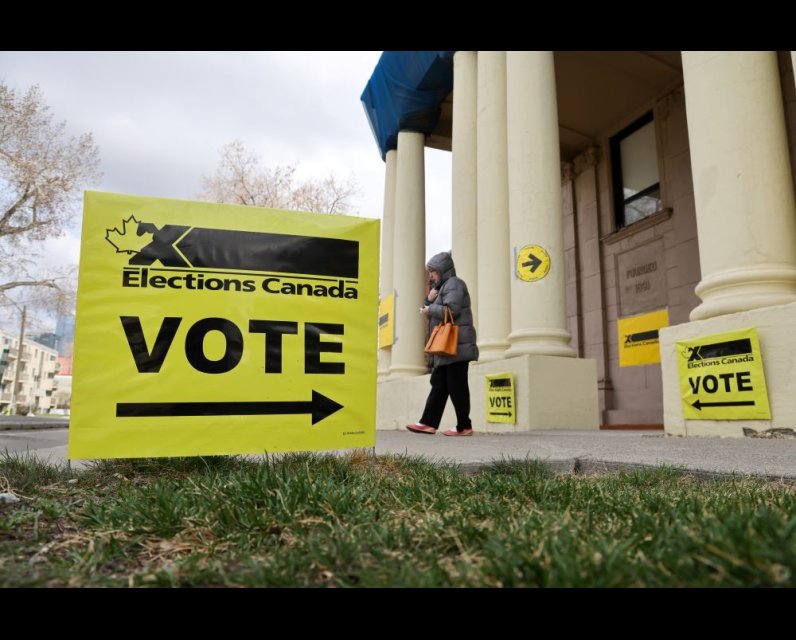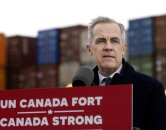Source Feed: National Post
Author: Michael Taube
Publication Date: April 17, 2025 - 14:00
Michael Taube: Are cracks developing in the Liberal strategy to lionize the progressive vote?
April 17, 2025

Since Mark Carney
became
Prime Minister on March 9, the Liberals have been leading in most opinion polls. The reason for this significant shift was fear, anger and revulsion about U.S. President Donald Trump’s tariffs. This, in turn, was combined with an unfounded belief that Conservative leader Pierre Poilievre was Trump’s Canadian equivalent, in spite of the fact the two leaders have vastly
different
political and ideological beliefs.
Carney has taken advantage of this good fortune that dropped in his lap. The Liberal strategy has been to lionize the progressive vote to combat Trump’s tariffs and turn this election into a two-party race. It’s worked to their advantage thus far.
That is, until recently. Cracks appear to be developing as support for the New Democrats and Bloc Quebecois have slowly improved in some polls. While left-wing frustrations against Trump, U.S. Republicans and Poilievre’s Conservatives remain intact, there are now indications that Canadian progressives don’t view Carney as being a political saviour as much as they did before.
Here’s one example.
The NDP has been steadily polling in the 8-9 per cent range of Nanos Research’s rolling telephone survey of decided voter intentions since April 7th. The
high
was 9.5 per cent on April 11, and the
low
was 8.1 per cent on April 7. The most recent Nanos
data
puts the NDP at 8.3 per cent on April 15. Conversely, the BQ has been on a recent uptick. Nanos listed them at 6.6 per cent on April 7. Bloc support fell into the 5 percent range for several days (with 5.2 per cent on April 12 being the low point), and then jumped from 5.5 per cent on April 14 to 6.2 per cent on April 15.
Some Post readers may consider this data to be nothing more than minor shifts. They could also point out that other pollsters list the NDP and BQ at lower percentages. In reality, you have to pay closer attention to what the trend line is showing and what it could potentially mean by election day on April 28.
The NDP is likely going to get crushed in this election. Some political commentators and columnists (including me) have suggested that if Canada’s socialist alternative reaches around 10 per cent, it will tighten riding results in voter-rich provinces like Ontario and B.C. Conversely, the BQ has been averaging around 6 to 7 per cent in national polls since the 2011 election. In the last federal election in 2021, it won 32 seats with 7.64 per cent of the total vote.
Both parties aren’t far away from these targets. There’s enough time to reach them.
Moreover, if we focus solely on the NDP, it largely depends where its voter concentration ultimately ends up. This party is chock full of centre-left to far-left ideologues who will support them to the ends of the earth. They don’t need a huge percentage of the popular vote to win seats or play spoiler in three-way races across Canada.
Remember what
happened
in the recent Ontario election. Premier Doug Ford and the PCs won a third straight majority government with 80 seats and 42.97 per cent of the vote. Marit Stiles and the NDP defied expectations, however, and formed the Official Opposition once more by winning 28 seats with only 18.55 per cent of the popular vote. Bonnie Crombie and the Liberals only took 14 seats in spite of winning 29.95 per cent.
Could a similar scenario happen in the federal election? Of course.
While the Conservatives don’t necessarily need the NDP to reach 10 per cent or higher, or the BQ to jump to 6 per cent or above, both results would provide an additional boost to Poilievre’s chances of winning. Hence, he has a golden opportunity to help drive a bigger wedge into the Liberal strategy and break apart the progressive vote even further.
What sort of strategy should he employ? Here are two ideas.
First, Poilievre should suggest that Canadian progressives seriously question whether Carney actually has the ability to negotiate with Trump on tariffs, Canadian safety, security and more. Carney may be an economist, but he’s also politically inexperienced, awkward, curt, arrogant and rather impersonal and standoffish. The President could easily tear him to shreds during negotiations, and start mocking him the way he did with his predecessor, “Governor”…err, former Prime Minister Justin Trudeau.
How would this be an improvement, exactly?
Second, Poilievre should keep pointing out that Carney has stolen more policy ideas from the Conservative campaign than anyone else. If the recently reassigned Liberal operatives really wanted to use their “
Stop the Steal
” buttons effectively, maybe they should have designed them with Carney in mind!
The PM removed the hated carbon tax that his Liberal Party implemented seven years ago, which the Conservatives wanted to
axe
from the start. Carney has called for
stronger measures
against criminals and gangs,
cancelling
the capital gains tax increase, and
eliminating
the GST on first home purchases. These policies have all largely been associated with the Conservatives for years. This
led
one reporter to ask him in March, “Why didn’t you run for the Conservative Party?”
Canadian progressives shouldn’t be supporting a weak-kneed Liberal Prime Minister who plucks ideas from the Conservative playbook and has been openly plundering their vote from their preferred political parties. Maybe they’re finally coming to this realization.
National Post
Expressions of grief and sympathy came pouring in on Saturday for an international college student shot dead by mistake in Hamilton while waiting for a city bus.The death of 21-year-old Harsimrat Randhawa, who Hamilton police described as an innocent bystander killed by stray gunfire as occupants of one car shot at another, triggered expressions of grief from officials with the college where she studied, the Canadian city where she lived and the country she first called home.
April 19, 2025 - 16:47 | Sharif Hassan | The Globe and Mail
The Liberal Party is promising to leverage artificial intelligence (AI) and merge similar programs and services to make the public service more efficient. Read More
April 19, 2025 - 14:45 | Paula Tran | Ottawa Citizen
WHITBY, ONT. — On
this week’s Ivison video
, regular guest Eugene Lang referred to “the trifecta — or what Van Morrison
would call The Great Deception.”
Lang, an experienced Liberal operative, was talking about the tendency of governments...
April 19, 2025 - 12:57 | John Ivison | National Post



Comments
Be the first to comment